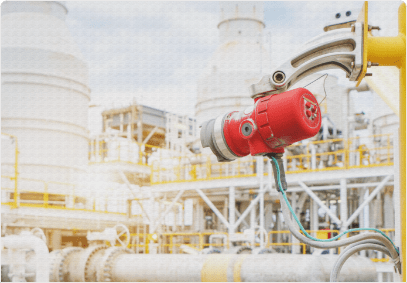10 Easy Facts About Roar Solutions Shown
10 Easy Facts About Roar Solutions Shown
Blog Article
The Single Strategy To Use For Roar Solutions
Table of ContentsThe Of Roar SolutionsThe Ultimate Guide To Roar SolutionsWhat Does Roar Solutions Mean?
In order to shield installments from a prospective explosion an approach of evaluating and categorizing a potentially unsafe area is needed. The objective of this is to ensure the correct selection and installment of equipment to ultimately protect against a surge and to guarantee safety and security of life.
(https://www.magcloud.com/user/roarsolutions)
No tools should be set up where the surface temperature level of the tools is higher than the ignition temperature of the provided danger. Below are some typical dirt hazardous and their minimum ignition temperature. Coal Dust 380C 225C Polythene 420C (melts) Methyl Cellulose 420C 320C Starch 460C 435C Flour 490C 340C Sugar 490C 460C Grain Dust 510C 300C Phenolic Resin 530C > 450C Aluminium 590C > 450C PVC 700C > 450C Soot 810C 570C The probability of the danger being present in a concentration high enough to create an ignition will certainly differ from area to location.
In order to identify this threat an installment is separated right into areas of risk depending upon the amount of time the hazardous is present. These areas are referred to as Zones. For gases and vapours and dusts and fibers there are 3 areas. Area 0 Area 20 A hazardous environment is extremely most likely to be existing and may exist for extended periods of time (> 1000 hours per year) and even continually Zone 1 Zone 21 A dangerous atmosphere is feasible yet unlikely to be present for long periods of time (> 10 450 C [842 F] A category of T6 suggests the minimal ignition temperature level is > 85 C [185 F] Unsafe location electrical equipment perhaps created for use in higher ambient temperature levels. This would suggested on the score plate e.g. EExe II C T3 Ta + 60C( This implies at 60C ambient T3 will certainly not be exceeded) T1 T1, T2, T3, T4, T5, T6 T2 T2, T3, T4, T5, T6 T3 T3, T4, T5, T6 T4 T4, T5, T6 T5 T5, T6 T6 T6 A T Course score of T1 implies the optimum surface temperature created by the instrument at 40 C is 450 C. Assuming the linked T Class and Temperature score for the equipment are appropriate for the location, you can constantly utilize a tool with a much more strict Division score than needed for the location. There isn't a clear solution to this inquiry. It truly does depend on the kind of devices and what repair work require to be carried out. Devices with particular examination procedures that can not be performed in the field in order to achieve/maintain 3rd party ranking. Should return to the factory if it is before the tools's service. Area Repair Work By Authorised Worker: Complicated screening might not be needed nonetheless particular treatments might require to be followed in order for the devices to keep its 3rd party score. Authorised employees must be utilized to perform the work properly Repair need to be a like for like substitute. New part must be taken into consideration as a straight replacement requiring no special testing of the devices after the repair work is full. Each piece of equipment with a dangerous score ought to be assessed individually. These are described at a high level below, however, for even more thorough info, please refer straight to the guidelines.
3 Simple Techniques For Roar Solutions
The tools register is an extensive data source of devices documents that consists of a minimum set of areas to recognize each product's area, technological specifications, Ex category, age, and environmental information. This info is vital for tracking and managing the tools efficiently within hazardous locations. In contrast, for routine or RBI sampling evaluations, the quality will certainly be a combination of Comprehensive and Close examinations. The ratio of Comprehensive to Shut assessments will certainly be determined by the Tools Danger, which is assessed based upon ignition danger (the possibility of a resource of ignition versus the probability of a flammable atmosphere )and the harmful location category
( Zone 0, 1, or 2). This variant will also affect the resourcing requirements for work preparation. When Lots are specified, you can develop tasting strategies based upon the sample size of each Whole lot, which describes the number of random equipment items to be evaluated. To figure out the called for sample dimension, 2 facets require to be assessed: the size of the Lot and the group of evaluation, which suggests the level of initiative that should be applied( decreased, regular, or raised )to the inspection of the Lot. By combining the group of examination with the Great deal size, you can then develop the appropriate rejection criteria for an example, meaning the allowable number of faulty items found within that example. For more details on this process, please describe the Energy Institute Standards. The IEC 60079 conventional suggests that the maximum interval between assessments ought to not surpass three years. EEHA inspections will certainly additionally be conducted beyond RBI projects as part of scheduled upkeep and devices overhauls or repair services. These assessments can be credited toward the RBI sample sizes within the affected Whole lots. EEHA examinations are performed to identify faults in electrical equipment. A heavy racking up system is necessary, as a solitary item of devices might have several mistakes, each with varying levels of ignition threat. If the mixed score of both evaluations is much less than twice the fault rating, the Lot is considered acceptable. If the Whole lot is still thought about undesirable, it needs to undergo a complete evaluation or justification, which might set off stricter inspection methods. Accepted Great deal: The root causes of any mistakes are identified. If a common failing mode is located, added equipment might need examination and repair service. Faults are categorized by severity( Security, Honesty, House cleaning ), guaranteeing that immediate problems are analyzed and addressed immediately to mitigate any type of effect on safety and security or operations. The EEHA data source need to track and record the lifecycle of mistakes along with the rehabilitative actions taken. Carrying out a durable Risk-Based Evaluation( RBI )approach is essential for ensuring compliance and safety and security in taking care of Electrical Devices in Hazardous Locations( EEHA) (eeha certificate). Automated Mistake Rating and Lifecycle Management: Effortlessly handle mistakes and track their lifecycle to boost assessment precision. The introduction of this assistance for risk-based inspection additionally enhances Inspectivity's setting as a best-in-class option for governing compliance, along her response with for any asset-centric evaluation use case. If you have an interest in finding out more, we welcome you to ask for a demonstration and uncover just how our service can transform your EEHA monitoring procedures.
Not known Details About Roar Solutions

In terms of eruptive danger, a hazardous area is an environment in which an eruptive ambience exists (or might be expected to be present) in amounts that require unique preventative measures for the building and construction, installment and usage of devices. hazardous area electrical course. In this write-up we discover the difficulties faced in the office, the risk control measures, and the called for expertises to work securely
It issues of modern life that we produce, store or take care of a series of gases or liquids that are regarded flammable, and a variety of dusts that are regarded combustible. These substances can, in particular conditions, create explosive atmospheres and these can have major and terrible effects. A lot of us are acquainted with the fire triangle eliminate any among the 3 elements and the fire can not happen, however what does this mean in the context of hazardous locations? When breaking this down right into its simplest terms it is basically: a combination of a particular quantity of release or leak of a certain material or product, combining with ambient oxygen, and the existence of a resource of ignition.
In many instances, we can do little regarding the degrees of oxygen airborne, yet we can have substantial influence on sources of ignition, for instance electric devices. Unsafe locations are recorded on the hazardous area category drawing and are determined on-site by the triangular "EX-SPOUSE" sign. Here, amongst other crucial information, zones are divided right into 3 kinds relying on the risk, the possibility and duration that an explosive atmosphere will exist; Zone 0 or 20 is deemed one of the most hazardous and Zone 2 or 22 is regarded the least.
Report this page